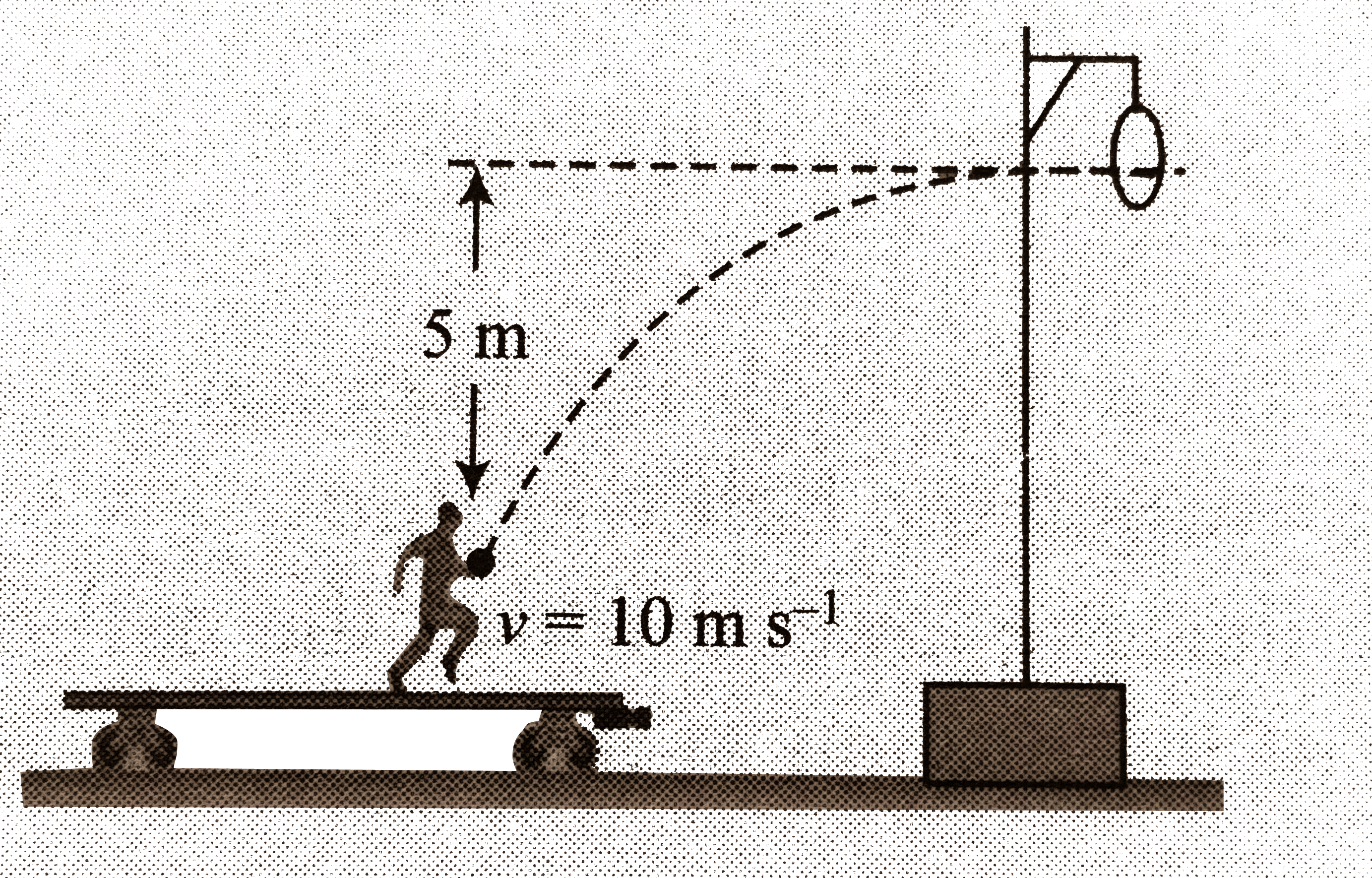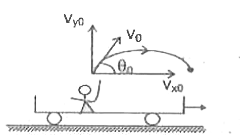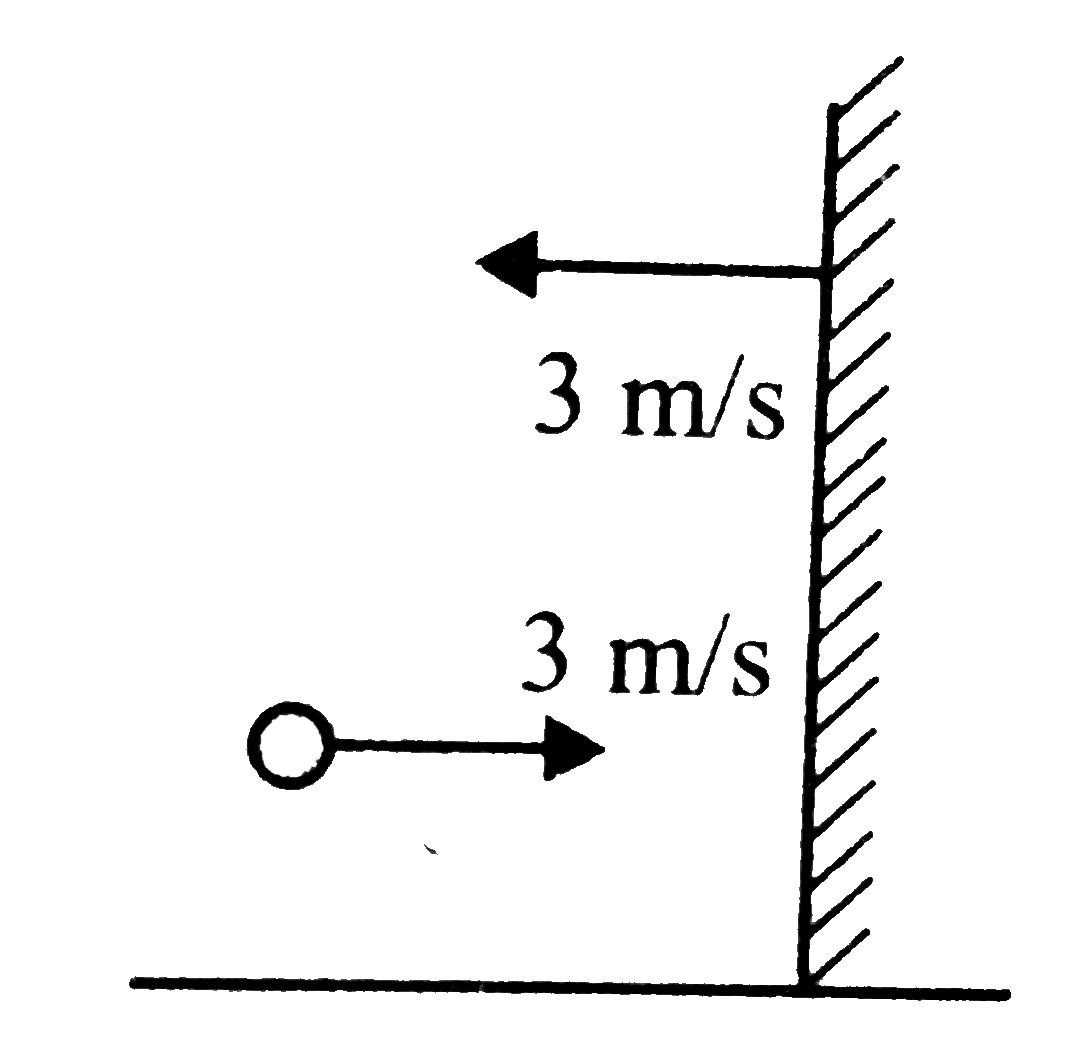A man is riding on a flat car travelling with a constant speed of 10m/s.He wishes to throw a ball through a stationary hoop 5m above the height of his hands in such a manner that the ball will move horizontally as it passes through the hoop. He throws the ball with a speed of 12.5m/s w.r.t himself.
How many seconds after he release the ball will it pass through the hoop?
Step by step video & image solution for A man is riding on a flat car travelling with a constant speed of 10m//s.He wishes to throw a ball through a stationary hoop 5 m above the height of his hands in such a manner that the ball will move horizontally as it passes through the hoop. He throws the ball with a speed of 12.5 m//s w.r.t himself. How many seconds after he release the ball will it pass through the hoop? by Physics experts to help you in doubts & scoring excellent marks in Class 11 exams.
Topper's Solved these Questions
- BOOK - ANURAG MISHRACHAPTER - DESCRIPTION OF MOTIONEXERCISE - Level-186videos
DESCRIPTION OF MOTION
- BOOK - ANURAG MISHRACHAPTER - DESCRIPTION OF MOTIONEXERCISE - Level-225videos
DESCRIPTION OF MOTION
- BOOK - ANURAG MISHRACHAPTER - DESCRIPTION OF MOTIONEXERCISE - Level-334videos
DESCRIPTION OF MOTION
- BOOK - ANURAG MISHRACHAPTER - FORCE ANALYSISEXERCISE - Matching type13videos
FORCE ANALYSIS
Similar Questions
A man is standing on a rail road car travelling with a constant speed of v=10ms−1 (Fig . 5.34). He wishes to throw a ball through a stationary hoop 5m above the height of his hands in such a manner that the ball will move horizontally as it passes through the hoop. He throws the ball with a speed of 12.5ms−1 w.r.t. himself.
(a) What must be the vertical component of the initial velocity of the ball ?
(b) How many seconds after he releases the ball will it pass through the hoop ?
( c) At what horizontal distance in front of the loop must he release the ball ?
 .View Solution
.View SolutionA man thrown a ball making an angle of 60∘ with the horizontal.He runs on a level ground with constant velocity and catches the ball at the same horizontal level as it was thrown.If he had thrown the ball with speed 4m/s, then speed of running must be ?(in m/s)
View Solution
Knowledge Check
- Question 1 - Select One
A man is riding on a flat car travelling with a constant speed of 10m/s.He wishes to throw a ball through a stationary hoop 15m above the height of his hands in such a manner that the ball will move horizontally as it passes through the hoop. He throws the ball with a speed of 12.5m/s w.r.t himself.
At what horizontal distance in front of the hoop must he release the ball?A12.5mB15.5mC17.5mD20m - Question 2 - Select One
A boy throws a ball in air in such a manner that when the ball is at its maximum height he throws another ball. If the balls are thrown with the time difference 1 second, the maximum height attained by each ball is
A19.6 m.B9.8 mC4.9 mD2.45 m - Question 3 - Select One
A boy throws a ball in air in such a manner that when the ball is at its maximum height he throws another ball. If the balls are thrown after the time difference of 1 s, then what will be the height attained by them?
A19.6 m.B9.8 mC4.9 mD2.45 m
A cricketer can throw a ball to a maximum horizontal distance of 100 m. How high above the ground can the cricketer throw the ball, with the same speed ?
View SolutionA boy is standing inside a train moving with a constant velocity of magnitude 10 m/s. He throws a ball vertically up with a speed 5 m/s relative to the train. Find the radius of curvature of the path of the L ball just at the time of projection.
 View Solution
View SolutionA billiard ball moving with a speed of 5m/s collides with an identical ball, originally at rest. If the first ball stop dead after collision, then the second ball will move forward with a speed of:
View SolutionA highly elastic ball moving at a speed of 3m/s approaches a wall moving towards it with a speed of 3m/s. After the collision. the speed of the ball will be
 View Solution
View SolutionA billiard ball moving with a speed of 5m/s collides with an identical ball, originally at rest. If the first ball stop dead after collision, then the second ball will move forward with a speed of:
View Solution

